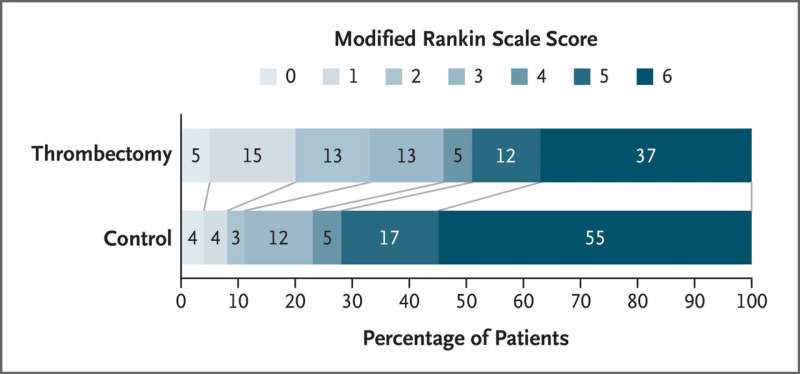
Stroke is the “number one killer” that endangers life and health in China. Statistics released by the National Health Commission show that the total number of stroke patients in China exceeds 28 million, and at least 1 in every 5 deaths is due to stroke.
The latest “China Stroke Report 2020” indicates that there are about 3.94 million new strokes and 2.19 million deaths due to stroke every year in China. It is estimated that the number of stroke patients in the world has exceeded 100 million. The World Stroke Organization has designated October 29 as “World Stroke Day”.
Early re-canalization of occluded vessels following acute ischemia stroke is key to improving prognosis. At present, the most effective treatment methods for acute ischemic stroke are intravenous thrombolysis and intra-arterial thrombectomy.
A new study, led by Prof. Wei Hu, director of the stroke center and department of neurology at the first affiliated hospital of the University of Science and Technology of China has demonstrated that in patients who suffered a basilar arterial occlusion, an endovascular thrombectomy in 12 hours will lead to to a better functional outcome compared with standard medical therapy.
In addition, endovascular thrombectomy can significantly improve patients’ self-care ability and reduce mortality. This study is the first clinical trial successfully demonstrating the superiority of endovascular thrombectomy in acute basilar artery occlusion.
The research team has named the clinical trial “ATTENTION” in the hope that prevention, treatment and research of strokes will attract an increasing amount of attention. Among all types of stroke, posterior circulation stroke accounts for about one fifth. Acute ischemic stroke caused by basilar artery occlusion is often associated with a poorer prognosis and a higher mortality than intracranial large vessel occlusion in the anterior circulation.
However, due to the lack of high-quality evidence-based clinical trials, the efficacy and safety of endovascular thrombectomy for acute basilar artery occlusion has been difficult to determine. Before the launch of this study, the treatment team of the neurology department of the First Affiliated Hospital of the University of Science and Technology of China had conducted a four-year clinical observational registry trial. The initiation of ATTENTION trial was based on high-quality evidence from the results of the preceding observational trial.
Source: Read Full Article